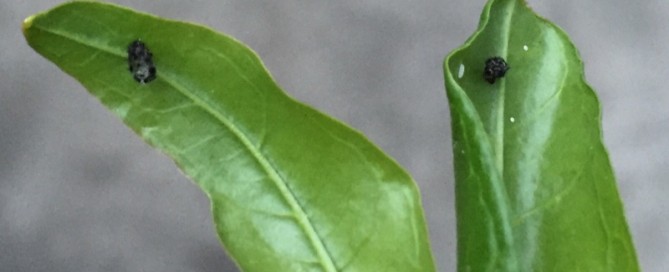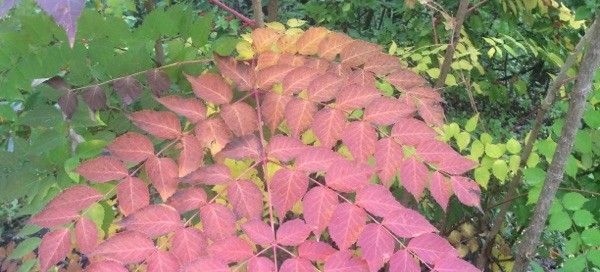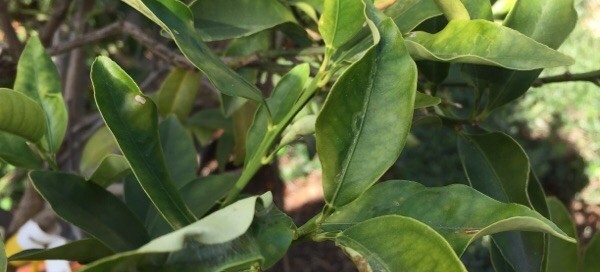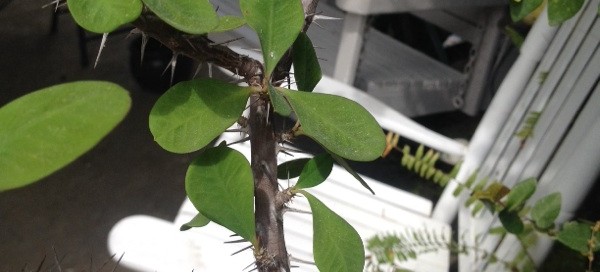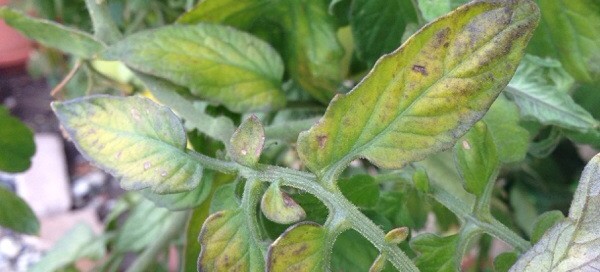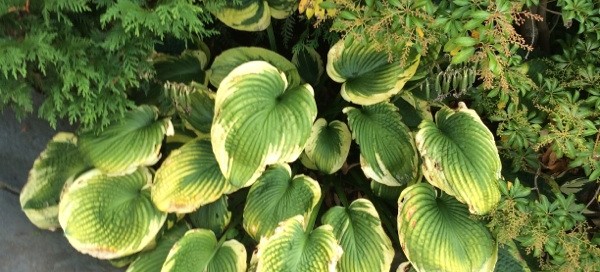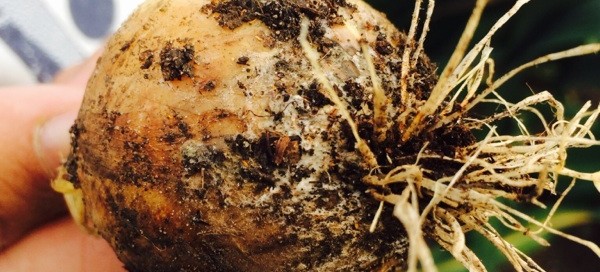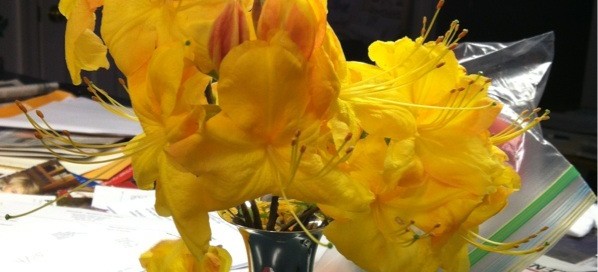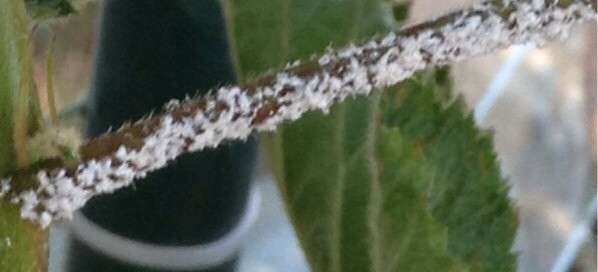Citrus Blackfly Numphs
Without seeing these black lumps "up close and personal" or putting them under a microscope, it's impossible to know for sure what you have. There are two possibilities based on this photo - one would be frass (aka caterpillar poop) from a larvae of some sort, but this seems unlikely as we don't see signs of these leaves being eaten. The second possibility is that these are citrus blackfly nymphs or the pupae of the orange spiny whitefly. In either case, you'd spray the underside of the foliage with horticultural oil to smother any adult insects as well as any nymphs/larvae.
There are some insects that pile their own excrement on their backs for protection. (Charming, right?) It's possible that these dark bits are something like this as well. Again, the horticultural oil is the best response. Repeat the application after a couple of weeks and monitor the plant to see if there are other symptoms. Avoid heavy-hitting insecticides that are likely to kill everything as this decreases the population of valuable predators that usually keep insect pests in check.
